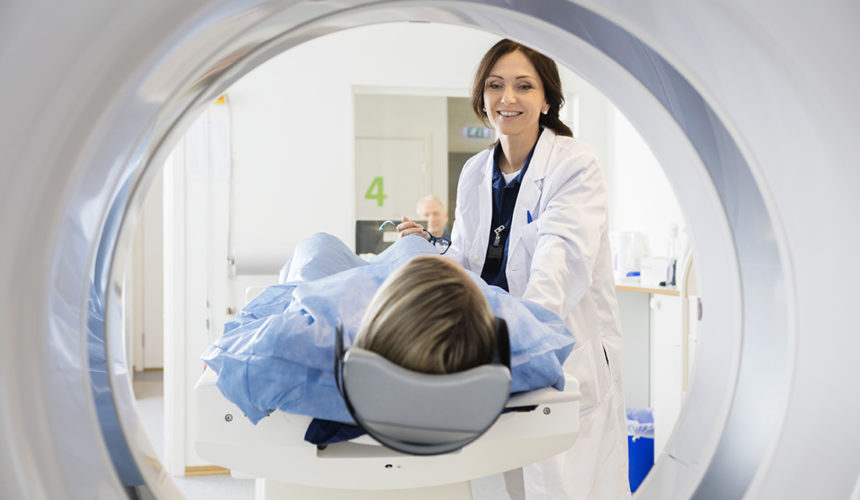Is This Your First MRI? Here’s a Few Tips
If this is your first magnetic resonance imaging (MRI) scan, you may not know quite what to expect. You may know that it is a type of imaging, which means it creates images of your organs and other structures inside your body. You might also know that your doctor has ordered an MRI to help diagnose or evaluate a medical condition. If you are like many people who have never undergone an MRI, though, you might wonder what you can do to make your MRI easier – you might also wonder what you can do to help the radiologist get the best MRI images possible.
The first thing you should know is that an MRI is painless and safer than an x-ray because MRI does not use ionizing radiation.
Next, you can rest assured that MRI is a very common procedure. Radiology teams perform nearly 40 million MRIs each year. This means MRI is a well-established procedure that radiology professionals can perform quickly and with expertise.
9 Tips for Improving the Comfort, Safety, and Images Created with MRI
1. Follow any provided instructions
In most cases, there are no special instructions to follow prior to having an MRI – you can usually eat and drink normally, for example, and you can typically take your medications as normal. Because there may be exceptions (for instance, your doctor may have ordered other tests that require special preparation), always check with your doctor or radiology team.
2. Secure a ride home if you think you will need a sedative
You may also need someone to drive you home if you require sedation to calm your nerves.
3. Leave jewelry and other metal objects at home
MRI machines use powerful magnets to create images of organs and tissues inside the human body. These strong magnets can forcefully pull at objects made from certain types of metals, like those used in jewelry, glasses, hairpins, and underwire bras. Furthermore, these metals can prevent the MRI machinery from getting the best quality images possible.
4. Wear clothes that are easy to remove
To ensure your safety, your radiology team will provide scrubs or a hospital gown that does not contain any metal. They will also provide a safe place to keep your belongings while you have the MRI.
5. Arrive a few minutes before your appointment
You may need to fill out a health history or other paperwork.
6. Discuss your health history with your radiology team
Tell your radiology team about any tattoos, history of kidney problems, or medical implants, such as insulin pumps or stents. It is important that your radiology team know if you have a tattoo, for example: while most people with tattoos safely undergo MRI, a few have reported burns or other adverse reactions. Be sure to tell your radiology team if you have any of the following:
- Pacemaker
- Pregnancy
- Claustrophobia
- Tattoos
- History of kidney problems
- Neurostimulators, also known as a TENS-unit
- Insulin pump
- Possible metal fragments in your eye
- Aneurysm clips
- Artificial heart valves
- Metallic prosthesis or implants
- Cochlear implants
- Vascular stent
- History of being a metalworker
- Bullet or shrapnel wounds
- Allergy to gadolinium or iodine
- History of diabetes
- Other conditions you believe may be relevant during your MRI
Your radiology team can take special measures to ensure your safety if you have any of the above.
7. Ask for a sedative as needed
The duration of MRIs can vary, but it typically takes 45 minutes to an hour for each body part examined during the scan. You will need to lie very still throughout the procedure. If you think anxiety will prevent you from lying still, you can ask for a sedative.
8. Wear earplugs or earphones
The MRI machine makes loud, intermittent banging noises. Your radiology team will provide earplugs or earphones to minimize the noise.
9. Use the alarm button (or call button) as needed
Your radiology team will give you a handheld button to push if you need assistance.
Your first MRI may seem scary at first, but using these tips can make the experience much easier and improve the quality of your MRI scan. For more information, contact your doctor or radiology team.


